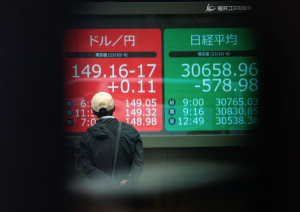Oil prices surged on Tuesday as concerns over potential supply disruptions after Russia’s invasion of Ukraine and related sanctions outweighed talks of a coordinated global crude stocks release.
May Brent crude futures were up $3.04, or 3.1%, to $101.01 a barrel by 0843 GMT. The benchmark touched a seven-year high of $105.79 after the invasion began last week.
US West Texas Intermediate (WTI) April crude futures were up $2.56, or 2.67%, at $98.28. The contract touched a high of $99.10 a barrel the previous day, ending up more than 4%.
A huge Russian military convoy approached Ukraine’s capital Kyiv on Tuesday after ceasefire talks between Russia and Ukraine failed to reach a breakthrough.
Russia’s economic isolation worsened as the world’s biggest shipping firm Maersk on Tuesday said it would halt container shipping to and from Russia.
“The fragile situation in Ukraine and financial and energy sanctions against Russia will keep the energy crisis stoked and oil well above $100 per barrel in the near-term and even higher if the conflict escalates further,” Louise Dickson, senior oil market analyst from Rystad Energy, wrote in a note.
Major oil and gas companies, including BP and Shell, have announced plans to exit Russian operations and joint ventures.
French energy giant TotalEnergies announced on Tuesday it will no longer provide capital for new projects in Russia amid the invasion of Ukraine but has not withdrawn from current projects.
“TotalEnergies supports the scope and strength of the sanctions put in place by Europe and will implement them regardless of the consequences (currently being assessed) on its activities in Russia,” a statement said.
Meanwhile, buyers of Russian oil are facing difficulty over payments and vessel availability due to sanctions.
Coordinated Release
Still, the market mood was helped by the United States and allies discussing a coordinated release of crude stocks to mitigate supply disruption. That release could reach 60 million to 70 million barrels, media outlets reported.
“That likely release is capping oil price rises for now,” analysts for Commonwealth Bank of Australia wrote in a note.
The International Energy Agency (IEA) is set to hold an extraordinary ministerial meeting on Tuesday to discuss what role its members can play in stabilising the oil market.
Meanwhile, Asia’s factories sustained a brisk recovery in February amid signs the coronavirus pandemic was having less of an impact on business, implying an uptick in oil demand.
Russia, which calls its actions in Ukraine a “special operation”, exports some 4 million to 5 million barrels per day of crude oil, and 2-3 million barrels per day of refined products.
The Organization of the Petroleum Exporting Countries (OPEC) and other producers – including Russia – will also meet on Wednesday and are expected to stick with a planned output increase for April.
• Reuters and AFP with additional editing by Jim Pollard
ALSO on AF:
Oil Prices Could Hit $125 On Supply Snarls, Warns JP Morgan
BP Exit, Plane Leases Open New Fronts For West Against Russia
Chinese Payment Stocks Soar Amid SWIFT Curbs Against Russia
Sanctions On Russia Remind China Over Its Need For Chips
























